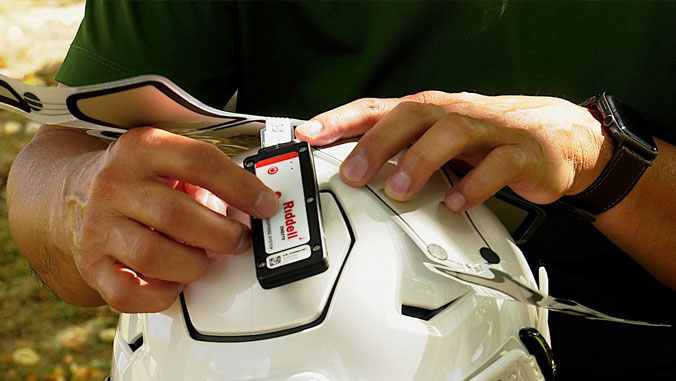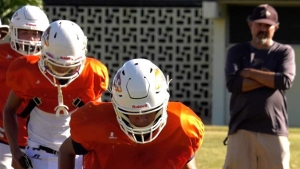
In each of the past 10 years, an estimated 1,000 concussions were sustained by Hawaiʻi high school athletes. The University of Hawaiʻi at Mānoa College of Education’s Department of Kinesiology and Rehabilitation Science is looking at ways to reduce that number. The department’s Hawaiʻi Concussion Awareness & Management Program (HCAMP) has initiated a three-year concussion study, monitoring live-track head impacts at high school football practices and games.
Pac-Five and St. Louis School football teams are participating in the HCAMP. Each football player is outfitted with a specially designed helmet, which houses an impact-monitoring system that transmits data to UH graduate assistants who then notify team athletic trainers to assess for possible concussion.
“The goal is to decrease the number of impacts that these athletes take so the cumulative effects of impacts will be decreased,” said Ross Oshiro, of UH Department of Kinesiology and Rehabilitation Science and HCAMP coordinator.

In the study’s first year, research personnel will be on-site at practices and games to monitor how much impact players sustain. Athletic trainers will be notified of high magnitude impacts and be able to respond immediately.
Research shows that an average high school athlete takes more than three weeks to recover from a concussion.
In the study’s second year, Pac-Five and St. Louis players will receive the HuTT®808 intervention, which incorporates helmetless tackling and blocking training under the supervision of coaches who will have been taught the technique. In addition, a third school will be added to the study and baseline impact data will be collected.
“I think it’s a responsibility for us, as coaches, to do our part in trying to help prevent concussions,” said Kip Botelho, Pac-Five head football coach.
Chronic Traumatic Encephalopathy (CTE) has been linked to specific changes in the brain that affect how the brain works. Research suggests that CTE is caused in part by repeated traumatic brain injuries, including concussions, and repeated hits to the head, called subconcussive head impacts. CTE is a brain disease that can only be diagnosed after death according to the Centers for Disease Control.
UH Mānoa College of Education Dean Nathan Murata and Erik Swartz, chair of the Department of Physical Therapy and Kinesiology at the University of Massachusetts Lowell, are co-principal investigators of the study.
HUTT®808 is funded by the GOG Foundation to reduce head impact exposure in Hawaiʻi high school football players. The foundation was established in memory of the late Gary O. Galiher, a Hawaiʻi attorney and UH alumnus.

